![]()
![]()
![]()
Use LEFT and RIGHT arrow keys to navigate between flashcards;
Use UP and DOWN arrow keys to flip the card;
H to show hint;
A reads text to speech;
28 Cards in this Set
- Front
- Back
|
The classification criterion for flammable gas is A. Critical temperature B. The "lower flammable limit", LFL. C. Specific ranges of flammability D. The flash point |
C. Specific ranges of flammability |
|
|
The WHMIS classification system has the following basic components: - supplier and workplace labels - MSDS - employee training True or false |
True |
|
|
WHMIS is includes eight specific hazard symbols True or false |
True |
|
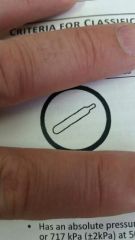
|
Compressed gas |
|
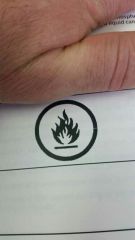
|
Flammable and combustible materials |
|
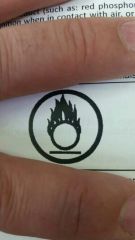
|
Class C Oxidizing materials |
|
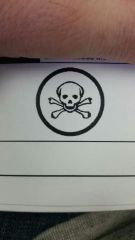
Immediate or chronic? |
Class D Division 1 Poisonous and infectious material |
|
|
LD is the acronym for? |
Lethal Dose |
|
|
LC is the acronym for? |
Lethal concentration |
|
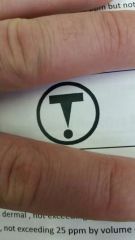
|
Class D division 2 Materials causing other toxic effects |
|
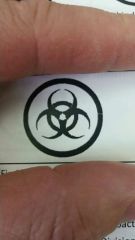
|
Division 3 Bio hazardous infectious materials |
|
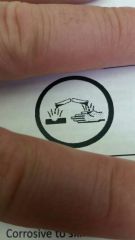
|
Class E Corrosives |
|
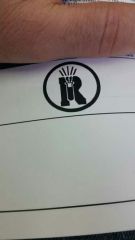
|
Dangerously reactive materials |
|
|
Product labels must be placed on all controlled products and MSDS must accompany all these products whenever the products are A. Imported into canada B. Exported from Canada C. brought into or shipped from any workplace in canada D. Manufactured in any workplace in canada |
A. Imported into canada |
|
|
The criterion for a combustible liquid is a flash point between A. 23 degrees C & 37.8 degrees C B. 61 degrees C & 93.3 degrees C C. 37.8 degrees C & 93.3 degrees C D. 44.6 degrees C & 102.3 degrees C |
C. 37.8 degrees C & 93.3 degrees C |
|
|
Fully exempted materials from the controlled products regulations include: 1. Decanted products 2. Tobacco and tobacco products 3. Wood and wood products 4. Explosives 5. Manufactured articles A) 1, 3, 4 B) 3, 4, 5 C) 2, 4, 5 D) 2, 3, 5 E) 1, 2, 3
|
D) 2, 3, 5 |
|
|
Whether or not a product is to be a controlled product is determined by the: A) Occupational Health and Safety Committee B) Hazardous Materials Information Review Regulation C) Hazardous Products Act / Controlled Products Regulation D) Ingredient Disclosure List E) Transportation of Dangerous Goods Regulation
|
C) Hazardous Products Act / Controlled Products Regulation |
|
|
A controlled product that is exempt from WHMIS could be: A) A compressed gas having a critical temperature of less than 50ºC B) Any liquid having a flash point of less than 37.8°C C) A product prone spontaneous combustion D) Any product not under control of the TDG Act E) Materials regulated under the Pest Control Products Act |
E) Materials regulated under the Pest Control Products Act |
|
|
To be classified as a flammable liquid, it must have a flash point of: A) Less than 21ºC B) More than 37.8ºC C) Less than 50ºC D) Less than 37.8ºC E) More than 50ºC
|
D) Less than 37.8ºC |
|
|
A Class “A” product would be: A) Any dangerous goods Classed as 4.1 under TDG Regulations B) Dibenzoyl peroxide C) A liquid with a flash point of less than 37.8ºC D) A product that is normally a gas below 50ºC E) A solid that ignites readily and burns with a self-sustaining flame |
D) A product that is normally a gas below 50ºC |
|
|
A Class "B" Division 5 hazardous material would be: A) Gasoline B) Flammable aerosol C) Compressed hydrogen D) Reactive flammables E) Diesel fuel
|
B) Flammable aerosol |
|
|
The application of WHMIS is primarily governed by the: A) Occupational Health and Safety Administration B) Hazardous Products Act C) Canadian Centre for Occupational Health and Safety D) Controlled Products Regulations E) American National Standards Institute |
D) Controlled Products Regulations |
|
|
An example of a Class “C” oxidizing material would be: A) Sodium cyanide B) Hydrazine C) Charcoal starter cubes D) Butyl hydroperoxide E) Calcium carbide |
D) Butyl hydroperoxide |
|
|
Controlled products are not covered under WHMIS regulations when subject to the: A) Transportation of Dangerous Goods Regulation (TDG) B) Hazardous Materials Information Review Regulations (HMIRR) C) Controlled Products Regulation (CPR) D) Ingredient Disclosure List Regulations (IDLR) E) Hazardous Products Act (HPA) |
A) Transportation of Dangerous Goods Regulation (TDG) |
|
|
The common way of expressing corrosiveness is: A) Alkalinity B) pH C) Turbidity D) Acidity E) A neutralising number |
B) pH |
|
|
Infectious material is a controlled product of Class: A) “C” B) “B” C) “D" D) “E” E) “A” |
C) “D" |
|
|
The application of WHMIS is primarily governed by the: A) American National Standards Institute B) Occupational Health and Safety Administration C) Hazardous Products Act D) Controlled Products Regulations E) Canadian Centre for Occupational Health and Safety |
D) Controlled Products Regulations |
|
|
Under Division 3, Class "D", Bio Hazardous Infectious Materials, Risk Group I is the _____ risk group: A) Low B) Non C) Moderate D) Very high E) High |
A) Low |

